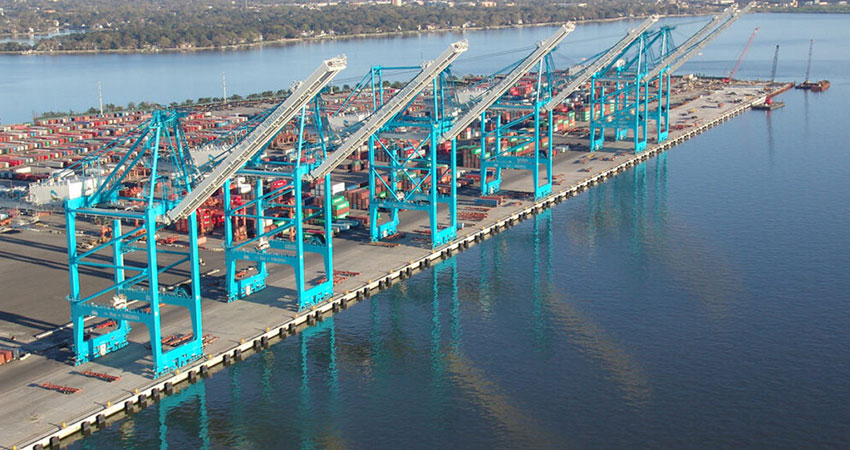The Port of Virginia in Hampton Roads
Smart warehouse technology powered by 5G, combined with the sensor- and data-driven Internet of Things (IoT), will transform logistics and supply chains as the Ford assembly line did for manufacturing in 1913, attendees were told at Ecommerce Operations Summit 2021 in Nashville.
Michael Miller, Deputy Director of Engineering at the Virginia Tech Applied Research Corp. and one of the two speakers in the session, said the infrastructure required to enable this future state is being laid now.
“What Henry Ford did was innovative and revolutionary and transformed an entire industry,” Miller said. “We’re talking about building something akin to that. Not a smart warehouse and supply chain for today or tomorrow, but for the day after tomorrow.”
Miller is the program director for a smart warehouse prototype for the Department of Defense, at a U.S. Marine Corps facility. The project includes a partnership with a Virginia-based academic-industry consortium whose efforts are being led by Miller’s co-presenter, Sachin Shetty, Associate Director of the Virginia Modeling, Analysis and Simulation Center (VMASC) at Old Dominion University. This consortium is also involved in various smart logistics projects at the Port of Virginia in Hampton Roads, led by Shetty.
Miller said a smart system using 5G and IoT could have provided a major benefit during the recent Colonial pipeline hack that shut down over 40% of the company’s operations.
“Smart gas stations could provide updates every 30 seconds on fuel levels,” he said. “What if they were able to take data from gas stations (during the hack), know where motorists could fill up on fuel by using a connected web of delivery vehicles and drivers, dynamically rerouting delivery operations in real time and maybe predicting where the shortages would be. This is the kind of resilience a smart system can provide.”
Miller cited examples of smart factories operated by Audi in Germany and military shipbuilder Huntington Ingalls in Newport News, VA, where 5G and IoT enable real-time location and delivery of parts for manufacturing, including drones ferrying parts to assembly workers at the Audi plant.
“When this is applied to a smart warehouse as well, everything moves faster, is more resilient and in some ways safer,” he said. “You can connect a smart watch to infrastructure in a warehouse, and know precisely where everything is, including the movement of robots, with real-time reporting. All these things are possible with an infrastructure built on 5G and beyond.”
Shetty said the “network slicing” capability of a smart supply chain system can automatically reallocate resources to different network management stations in the event of a breach or hack.
“It allows you to recognize (the intrusion) and make sure it doesn’t spread to the rest of the infrastructure, in a nano second,” he said. “You can’t prevent all hacks but you can limit their impact.”
Shetty said these smart systems, like what has been installed at the Port of Virginia, enables track and trace and real-time location of all assets. It can be connected to ERP applications, creating a single source of truth in the database.
“You have the ability to track any asset in real time across the various warehouses, and trust that information,” he said. “If the asset is moved, you always know the real-time location in milliseconds. If you lose an object, you can tell a robot to go to the new location. Imagine scheduling a robot with that information, and the benefits. Now you can manage insights and analytics, improving scheduling and efficiency.”
Shetty said the Port of Virginia is using a smart system to address a lack of real-time insights on containers, including their contents and locations. 5G hubs have been installed at Virginia universities that are part of the consortium.
Another smart system is being created to provide location data on delivery vehicles to more efficiently assign them for loading and unloading containers, using 5G phones in the trucks. Shetty said the Port of Virginia has invested in a private 5G network to enable the system to work in a secure environment.
“When we asked the CIO what concerns he had, he said he had to sell the idea to the trucking union, convincing drivers it was not a ‘big brother’ situation tracking their habits,” he said. “The solution is anonymous, not attributable to any individual driver. We had to start with privacy, making sure they were comfortable with the connection to their phones.”

